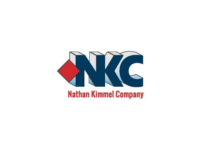How to Choose the Best Drywall
For the best results, make sure the board meets the space’s performance needs

Photo courtesy of CertainTeed Gypsum
At one time, drywall board might have been drywall board, but over the years, the number of product options on the market has grown significantly. Now, drywall contractors have the opportunity to customize the space to meet the performance needs of the project, but with so many options available, it can be hard to determine the best product for the job at hand. The products specified need to take into consideration the unique demands of the space and should be selected with regard to how they will affect the functions of the room, according to Julian Ketchum of CertainTeed Gypsum. This is especially important when choosing the right drywall for the job.
It is Important to Know Three Things When Choosing a Drywall Board:
- How the space will be used.
- What boards are available?
- The benefit each board can bring to a project.
Now, let’s take a closer look at some common demands on a space as it relates to drywall and determine the available options and their benefits.
For Areas with Heightened Mold and Moisture Exposure
- Moisture- and mold-resistant drywall is best used for interior walls, especially in areas like kitchens, bathrooms or basements.
- The best drywall boards for these areas have moisture-resistant cores that prevent water and moisture intrusion from seeping into the board itself.
- Moisture- and mold-resistant drywall should also be coupled with fiberglass mesh finishing tapes rather than standard tapes. Standard paper tapes may actually erode the value of the drywall by inadvertently housing moisture within the paper.
- A product like CertainTeed’s M2Tech moisture- and mold-resistant drywall is a great all-around choice because it can achieve the highest standards for mold and moisture resistance set by ASTM International while protecting against mold, which can be expensive and time-consuming to fix.
For Projects Requiring Fire-Rated Gypsum Boards
- Fire-rated design is required in many commercial and multifamily residential buildings, a result of increasingly stringent safety standards intended to help protect occupants when disaster strikes. When undertaking these kinds of builds, it’s critical that products used meet the standards set by ASTM International to stay up to code while benefiting the occupant.
- Fire-resistant gypsum or drywall boards consist of a specially formulated, dense core compared to traditional gypsum boards, creating a barrier that’s harder for fire to penetrate.
- While not fireproof, fire-rated gypsum boards are designed to delay the spread of fire and extend the time a person has to leave the building. As an added benefit, these boards are typically stronger and resistant to repeated use and abuse.
- Products with a fire-resistant core, like CertainTeed’s Type X fire-resistant drywall, consist of a solid-set gypsum core enclosed with a strong liner back paper, making them able to resist increased heat better than traditional gypsum boards.
For Spaces Where Sound and Privacy are Top Concerns
- For residential builds, like in-home theaters, home offices or basements, sound-dampening drywall or gypsum boards are ideal for retaining sound and acoustics in a confined space.
- For commercial spaces, like offices, patient waiting rooms or school classrooms, sound-dampening drywall boards are ideal because they provide privacy and improve the occupant’s focus.
- Products like CertainTeed’s SilentFX QuickCut noise-reducing drywall feature two specially formulated gypsum cores designed to improve sound attenuation and dampen unwanted noises, all while meeting Sound Transmission Class standards.
It is important for drywall professionals to take a minute with each job and make sure they are selecting the best board to meet the needs of the project.
Looking for a reprint of this article?
From high-res PDFs to custom plaques, order your copy today!








